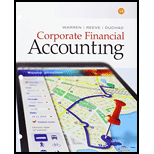
A.
Ratio analysis
It is the financial analysis tool for measuring the profitability, liquidity, capability and overall performance of a company.
Following are the two measures of liquidity:
- 1.
Current ratio : Current ratio is used to determine the relationship between current assets and current liabilities. The ideal current ratio is 2:1. - 2. Quick ratio: Quick ratio measures the immediate debt paying capacity of a business, which can be measured by dividing quick assets by the current liabilities. Quick assets represent cash, readily marketable securities, and accounts receivable.
- 3.
Working capital : Total current assets minus total current liabilities are the working capital of a company.
Vertical analysis: The analysis which compares the percentage change in the financial components in relation to a base item is referred to as vertical analysis.
Vertical analysis percentage: Vertical analysis denotes the percent of financial element or component in relation to a base amount. It is computed as shown below:
To compute: The working capital for each company.
B.
To compute: The current ratio for each company.
C.
To compute: The quick ratio for each company.
D.
To Explain: That the working capital is a good measure of relative liquidity in comparing the two companies.
E.
To identify: The company which has the highest debt-paying ability, based on the current ratio.
F.
To identify: The company which has the greater short-term debt-paying ability, based on the quick ratio.
G.
To explain: The reason behind the difference in the result between Part E and Part F.
Want to see the full answer?
Check out a sample textbook solution
Chapter 10 Solutions
Bundle: Corporate Financial Accounting, Loose-leaf Version, 14th + CengageNOWv2, 1 term Printed Access Card
- Acp Distributors purchased a cooling system for its storage warehouse at a cost of $92,500. The cooling system has an estimated residual value of $7,000 and an estimated useful life of 10 years. What is the amount of the annual depreciation computed by the straight-line method?arrow_forwardPlease give me correct answer this accounting questionarrow_forwardCan you solve this general accounting problem using accurate calculation methods?arrow_forward
- Help with accounting questionarrow_forwardGet correct solution with explanation of this accounting questionarrow_forwardCarlisle Services reported revenues of $78,000, expenses of $72,500, and dividends of $5,800 for the month ended February 28, 2024. Carlisle Services experienced a net income or net loss of what amount?arrow_forward
 Cornerstones of Financial AccountingAccountingISBN:9781337690881Author:Jay Rich, Jeff JonesPublisher:Cengage Learning
Cornerstones of Financial AccountingAccountingISBN:9781337690881Author:Jay Rich, Jeff JonesPublisher:Cengage Learning Financial Accounting: The Impact on Decision Make...AccountingISBN:9781305654174Author:Gary A. Porter, Curtis L. NortonPublisher:Cengage Learning
Financial Accounting: The Impact on Decision Make...AccountingISBN:9781305654174Author:Gary A. Porter, Curtis L. NortonPublisher:Cengage Learning Financial AccountingAccountingISBN:9781337272124Author:Carl Warren, James M. Reeve, Jonathan DuchacPublisher:Cengage Learning
Financial AccountingAccountingISBN:9781337272124Author:Carl Warren, James M. Reeve, Jonathan DuchacPublisher:Cengage Learning




